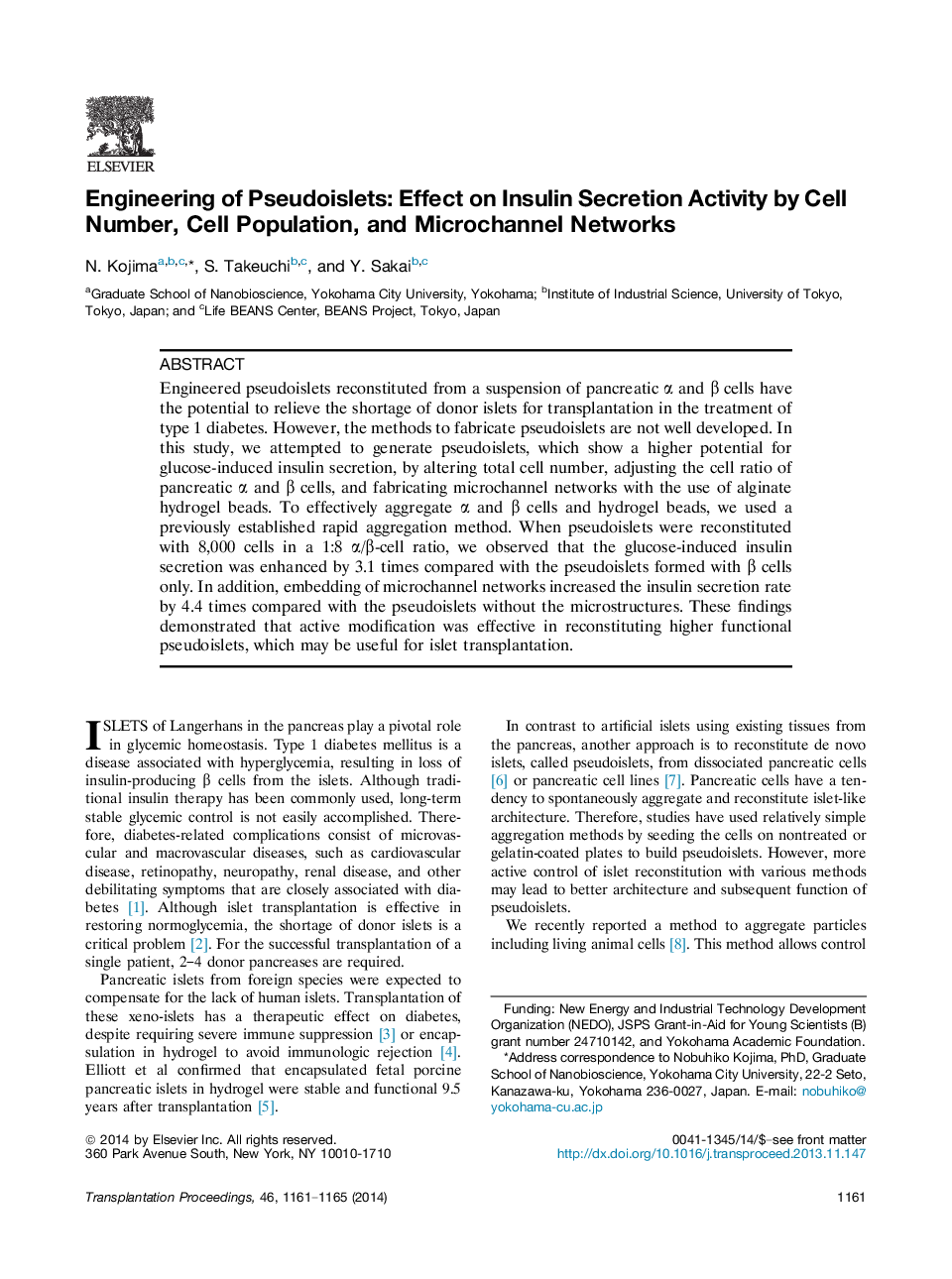| Article ID | Journal | Published Year | Pages | File Type |
|---|---|---|---|---|
| 4256703 | Transplantation Proceedings | 2014 | 5 Pages |
Engineered pseudoislets reconstituted from a suspension of pancreatic α and β cells have the potential to relieve the shortage of donor islets for transplantation in the treatment of type 1 diabetes. However, the methods to fabricate pseudoislets are not well developed. In this study, we attempted to generate pseudoislets, which show a higher potential for glucose-induced insulin secretion, by altering total cell number, adjusting the cell ratio of pancreatic α and β cells, and fabricating microchannel networks with the use of alginate hydrogel beads. To effectively aggregate α and β cells and hydrogel beads, we used a previously established rapid aggregation method. When pseudoislets were reconstituted with 8,000 cells in a 1:8 α/β-cell ratio, we observed that the glucose-induced insulin secretion was enhanced by 3.1 times compared with the pseudoislets formed with β cells only. In addition, embedding of microchannel networks increased the insulin secretion rate by 4.4 times compared with the pseudoislets without the microstructures. These findings demonstrated that active modification was effective in reconstituting higher functional pseudoislets, which may be useful for islet transplantation.
